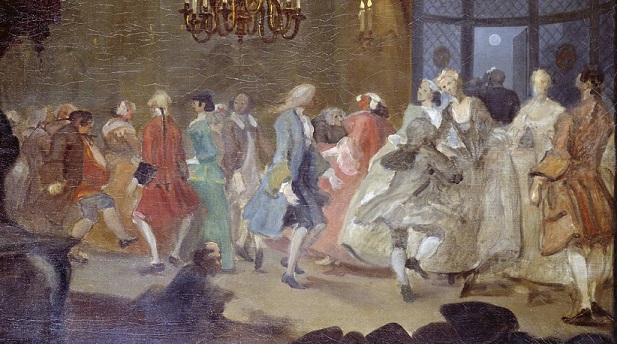Your basket is currently empty!
Welcome to Mrs McLean’s Waltzing Party
-
Latest News
“The Fair Assembly”: Social Dancing in Edinburgh from 1705
The best general history of social dancing in Scotland I have found so far is called Oh, How We Danced: The History of Ballroom Dancing in Scotland by Elizabeth Casciani… Read on…
For the latest news, please visit my blog here!
This project is dedicated to restoring the valuable traditions and conventions of Catholic life, especially those attached to social dancing in Europe and the New World.

The role of social dancing in Catholic family life is the stuff of legend–and charming scenes in Hollywood movies like Brooklyn. Many Catholic grandparents–or great-grandparents–first met and fell in love as young people at their local parish dance. Many young people wish for its return!
In Scotland, children are still taught their national country dances and introduced to their traditional music. Not only does this help root them in the land under their feet, it frees them from the tyranny of contemporary pop music when they want to dance.
Both Ireland and Scotland have a claim on the institution of the “ceilidh” (KAY-lee). The ceilidh is defined by the Oxford English Dictionary as a “social event with Scottish or Irish folk music and singing, traditional dancing, and storytelling.” Ceilidh dancing, usually a simplified version of Scottish country dances, is integral Scottish social life, from weddings to race meetings.
Other countries have their own social dance heritage. In Austria, secondary school students learn the Viennese waltz. In Poland, everyone dances the Polonaise at their graduation ball.
Today I am dedicated to helping Catholics who have already claimed their birthright to their ancestral liturgical traditions, especially the Traditional Latin Mass, to be enriched also by their social dancing heritage.


